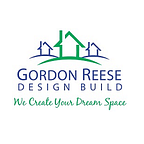A Quick Guide to Understanding the Design Build Process
The concept of a design build method was first introduced as an “alternative” approach to project delivery. It seemed unusual at the time to have just one entity handle what was then seen as two drastically different aspects of construction; designing and building. It didn’t take long for people to realize how revolutionary this method was. It was simple, efficient, and it allowed for a more unified and consistent project delivery system. Architects could work directly with contractors to bring their designs to life, and any possible roadblocks were immediately addressed by professionals from both sides of the assignment.
Today, this method is thriving. More and more homeowners are making the switch to contracting companies that follow the design build approach. It just seems the safer, smarter, and more cost-efficient choice.
To further illustrate why, let’s take a look at the major differences between the design build method and the traditional method.
TRADITIONAL PROJECT DELIVERY
In a traditional project delivery setting, the client works with two completely different — and completely separate — entities: the designers and the builders. Each entity manages exactly what their name suggests; the designer designs the structure, the builders build it.
This project delivery method can be effective, but it’s certainly not cost-efficient. It’s not very time-efficient either. And here’s why:
- Working with two separate companies means having to go through two different channels of communication. This also means that you (the client) are the only point of communication between the two entities, opening up the likelihood of an almost endless back-and-forth. There will be a lot of “But the builders told me…” and “The designer said…” kind of sentences coming from your end.
- Two different companies come with two different schedules that you have to sync up with. If you’re lucky, the designers and builders will have one or two timeslots that line up perfectly, allowing them to work on the project at roughly the same time.
This isn’t usually the case though. Usually you’ll have the builders at your house on a Monday, telling you that the material the designers suggested are a little pricier than you expected. And when you call the designers for more suggestions, they can only get back to you on a Wednesday.
- Each company will likely give you a quote that, while accurate, is still subject to change due to external factors i.e., possible revisions, order changes, scheduling conflicts, and the like. You’ll have to keep track of two separate payments and all the changes that could potentially change the amount.
- While we’re sure that every reputable business is professional enough to value honesty and accountability, there is the possibility that the designers and builders might blame the other party when things go wrong. After all, they’re not affiliated with each other. They have no qualms throwing the other entity under the bus.
DESIGN BUILD PROJECT DELIVERY
Unlike the traditional setting, design-build project delivery is where one entity handles both the design and build aspects of the assignment. That means that the designer and contractor work together as one cohesive unit throughout the entirety of the project, from the design phase to the construction phase.
This method is just as effective as (if not more so than) the traditional project delivery method. However, you’ll find that it is much more cost- and time-efficient than the latter. Here’s why:
- Working with one entity means just dealing with one point of communication. Whatever you discuss with the contractor or project manager will instantly be disseminated to the designers and builders. This eliminates the possibility of a constant back-and-forth and the risk of miscommunication between two major aspects of the project.
It also allows the possibility of the designer and contractor communicating directly with each other regarding potential problems or roadblocks in the project.
- Unlike traditional project delivery, having one company to handle both aspects of your project means you only have to sync up with one schedule. Whatever day the designers are free, the builders will be there as well. If there’s a design problem during construction, the builders can call in the designers to have a look. If the designers have several recommendations re: materials, they can easily call in the builders to discuss prices and market options with the client.
- One company, one bill. Most design build companies will give their clients a bulk quote that includes both design and build costs.
Like the traditional project delivery, this quote is also subject to change due to revisions and order changes. However, since there’s just one entity handling the bill for both areas, it’ll be much easier for you to keep track of what changes were done and what charges were added (or subtracted) from the overall quote.
- A unified effort means that one change affects the entire team. If there’s a problem with the designer, the builders work with the client and designers to figure out a solution. Simply put, the designers aren’t going to blame the builders, and vice-versa.
The beauty of the design build method lies in its cohesiveness. One entity for design and construction makes for a synchronized and coordinated dichotomy of decision-making and problem solving that is present for the whole construction project. And although more people are familiar with the traditional project delivery method, the design build approach is slowly but surely becoming the new standard.
Originally published at gordonreese.com on August 30, 2019.
